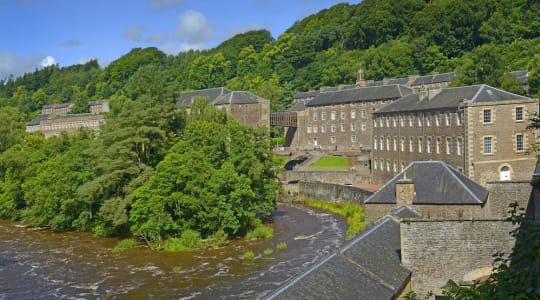
New Lanark is a village in Scotland, located in the South Lanarkshire region near the River Clyde. The village was founded in 1786 by David Dale, a Scottish entrepreneur, and social reformer, and is renowned for its historic cotton mills, which played an important role in the Industrial Revolution.
New Lanark was built as a model industrial community, with a focus on improving the living conditions and welfare of the workers who lived and worked there. The village was designed to provide everything the workers needed, including housing, education, healthcare, and leisure facilities. The mills and associated buildings were constructed using the latest technology of the time, and the village had its own power source, provided by the Falls of Clyde hydroelectric power station.
Today, New Lanark is a UNESCO World Heritage site and a popular tourist destination, offering visitors a glimpse into life during the Industrial Revolution. The village has been carefully preserved, and many of the historic buildings have been restored and converted into museums, galleries, and other attractions. The New Lanark Visitor Centre is the main point of entry, providing information and guided tours of the village, and there are also shops, restaurants, and accommodation options available on-site.
Explore Near New Lanark
Discover 5 attractions, 5 cities, and 3 airports within 75km. Perfect for planning day trips, finding connecting flights, or discovering new destinations to explore during your visit.
Nearby Attractions & Places to Visit
5 destinations within 34.0km - 36.9km from your location





Nearby Cities Worth Exploring
5 destinations within 18.8km - 34.5km from your location
Airports Near New Lanark
3 destinations within 41.1km - 53.7km from your location
Cross-Border Adventures Near New Lanark
Discover cross-border adventures near New Lanark. Explore neighboring countries with similar attractions and extend your travel experience across borders.
